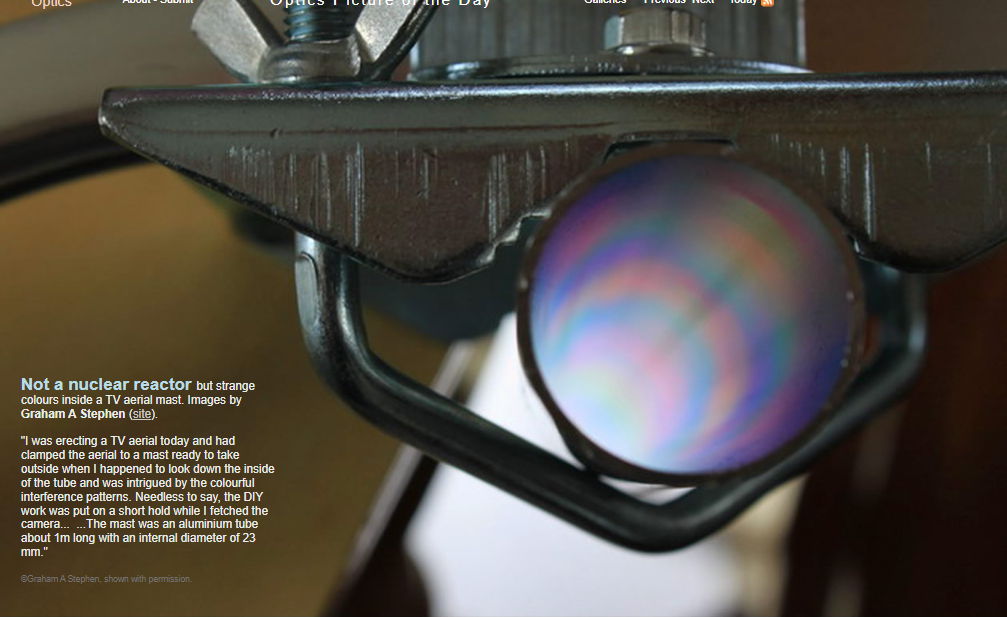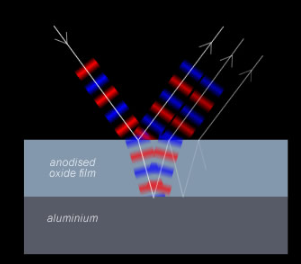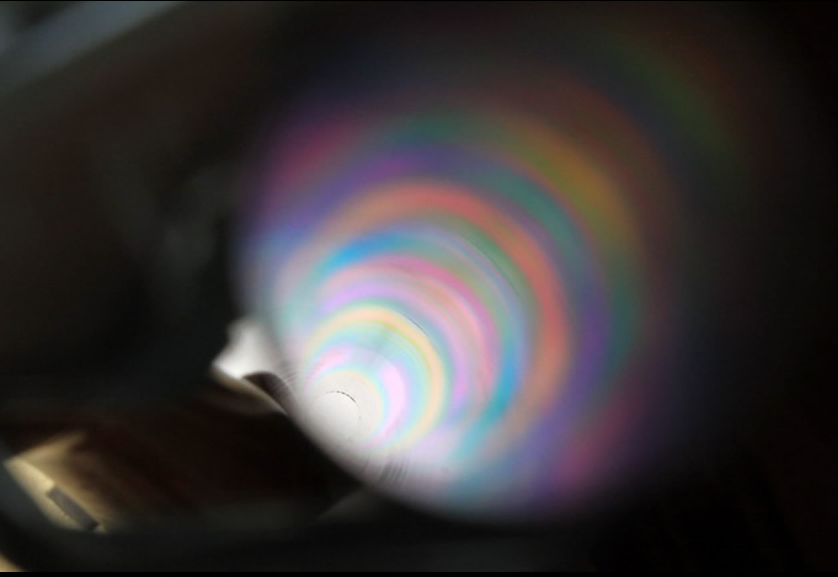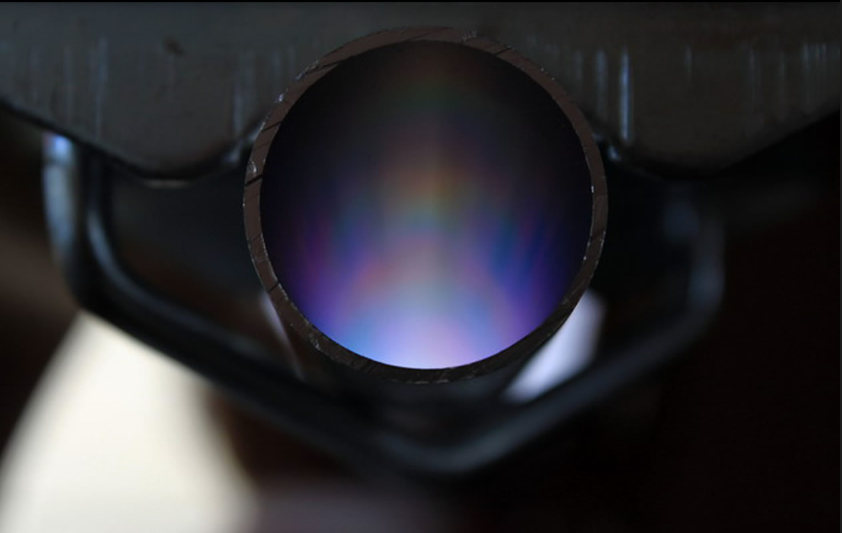OPOD - Tube Colours
OPOD - Tube Colours: Unveiling the Mystery of Interference Patterns
Have you ever stumbled upon unexpected bursts of vibrant colors inside an aluminum tube? Graham A Stephen, while erecting a TV aerial, discovered a fascinating phenomenon within the tube that left him intrigued. He noticed colorful interference patterns and wasted no time capturing them with his camera. What could be the cause of these mesmerizing hues within the tube? Let's delve into the world of interference and thin films to unravel this captivating mystery.
The aluminum mast, with a length of approximately 1 meter and an internal diameter of 23 mm, seemed to possess a secret world of colors within its confines. Graham Stephen's subsequent research revealed similar phenomena in shotgun choke tubes after being thoroughly cleaned. Additionally, glass capillaries have been known to exhibit internal colors, indicating interference occurring within glassy or transparent films.
To understand the underlying cause of these intense colors, we must first explore the properties of aluminum. Being a highly reactive metal, aluminum rapidly forms a thin layer of oxide upon contact with air. This oxide layer acts as a barrier, preventing further oxidation. However, this layer is only a few atoms thick and does not account for the vibrant colors observed. The mystery deepens.
One possible explanation lies in the process of anodization. To enhance corrosion resistance, aluminum is often anodized by immersing it in an electrolytic bath and applying a positive electrical charge. This causes the oxide film to grow in thickness. Although decorative dyeing of the film is common, it does not appear to be the case with the aluminum tube in question.
The absence of intense colors on the outer surface of the tube raises another intriguing question: why are the colors predominantly confined within? It is hypothesized that multiple reflections along the length of the tube contribute to this phenomenon. These reflections, coupled with the relatively small aperture through which light enters the tube, create a favorable environment for interference to occur. However, further experiments are needed to validate this theory and unravel the complete mechanism behind the captivating display of colors.
To understand the mechanism at play, we need to delve into the realm of thin film interference. When light waves encounter a thin film, such as the oxide layer on the inner surface of the aluminum tube, they reflect from both the top and bottom surfaces. These reflected waves overlap and interfere with each other. The interference pattern depends on the thickness of the film and the wavelength of light.
For a given color, specific directions of the reflected waves are in phase and produce bright regions, while other colors exhibit phase differences at different angles, resulting in regions of darkness or reduced brightness. This phenomenon is similar to what we observe in soap bubbles and oil films, where thin film interference gives rise to their vibrant colors.
In conclusion, the unexpected burst of colors within the aluminum tube and similar phenomena observed in shotgun choke tubes and glass capillaries can be attributed to thin film interference occurring within transparent or glassy films. While the precise mechanism behind the confinement of these colors within the tube remains a subject of further investigation, it is evident that multiple reflections and a small aperture play a role in creating the mesmerizing display.
The discovery made by Graham A Stephen not only piques our curiosity but also reminds us of the hidden wonders that can be found in everyday objects. So, next time you come across an aluminum tube or any transparent film, take a moment to appreciate the potential for unexpected bursts of color lurking within.

Not a nuclear reactor but strange colours inside a TV aerial mast. Images by Graham A Stephen (site).
"I was erecting a TV aerial today and had clamped the aerial to a mast ready to take outside when I happened to look down the inside of the tube and was intrigued by the colourful interference patterns. Needless to say, the DIY work was put on a short hold while I fetched the camera... ...The mast was an aluminium tube about 1m long with an internal diameter of 23 mm."
©Graham A Stephen, shown with permission.

We were puzzled by these colours. Graham Stephen's research found that shotgun choke tubes show colour rings after a good cleaning. Glass capillaries can also show internal colours. Both suggest interference in a glassy or transparent film.
Aluminium is a highly reactive metal. In contact with air it rapidly forms a thin surface layer of oxide which stops further oxidation. However, the layer is only a few atoms thick and to confer better corrosion resistance the metal is often 'anodised'. The work is made the positive electrode in an electrolytic bath and the oxide film grown in thickness. Sometimes for decorative purposes the film is dyed but that is not the case here.
Why are such intense colours not seen on the outer tube surface? Perhaps multiple reflections along the tube help as does the relatively small and distant aperture through which the light enters the tube. More experiments!
Thin film interference:
Light waves reflect from the film top and bottom surfaces. The two outgoing waves overlap and interfere. For a given colour, the waves in certain directions are in phase and give brightness. Other colours are in phase at different angles.
The colours of soap bubbles and oil films are thin film interference.


Note: this article has been automatically converted from the old site and may not appear as intended. You can find the original article here.
Reference Atmospheric Optics
If you use any of the definitions, information, or data presented on Atmospheric Optics, please copy the link or reference below to properly credit us as the reference source. Thank you!
-
<a href="https://atoptics.co.uk/blog/opod-tube-colours/">OPOD - Tube Colours</a>
-
"OPOD - Tube Colours". Atmospheric Optics. Accessed on April 28, 2024. https://atoptics.co.uk/blog/opod-tube-colours/.
-
"OPOD - Tube Colours". Atmospheric Optics, https://atoptics.co.uk/blog/opod-tube-colours/. Accessed 28 April, 2024
-
OPOD - Tube Colours. Atmospheric Optics. Retrieved from https://atoptics.co.uk/blog/opod-tube-colours/.